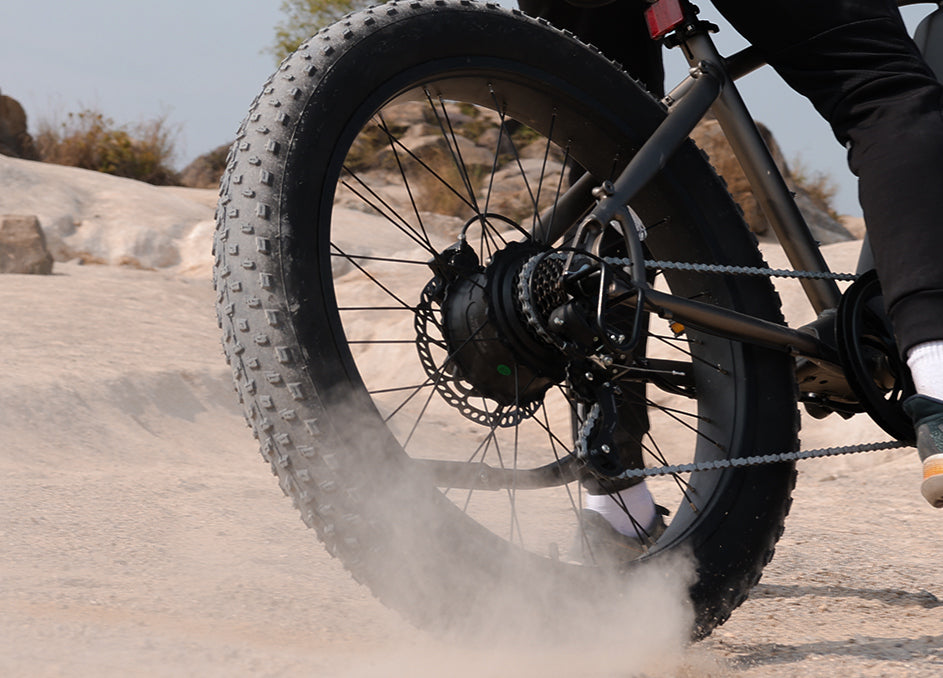Unlock the Secrets of Class 2 Fat Tire E-Bikes: Discover Why Hydraulic Brakes Are a Game Changer!
In recent years, electric bikes, or e-bikes, have surged in popularity as a convenient and eco-friendly mode of transportation. Among the diverse range of e-bikes, Class 2 fat tire e-bikes have emerged as a favorite for many riders, thanks to their unique features that cater to both leisure and utility. These bikes are designed to offer a more stable and comfortable riding experience, making them ideal for various terrains.

A Class 2 fat tire e-bike is characterized by its robust design, featuring wider tires that enhance grip and stability. Unlike Class 1 e-bikes, which rely solely on pedaling, Class 2 e-bikes come equipped with a throttle, allowing riders to propel the bike without pedaling. This feature is particularly beneficial for those who may need a little extra assistance on challenging paths or during long rides.
Brakes are a crucial component of any e-bike, directly impacting rider safety and performance. This article will delve into the advantages of hydraulic brakes, which are becoming increasingly popular among e-bike enthusiasts for their superior performance and reliability.
Understanding Class 2 Fat Tire E-Bikes
Class 2 e-bikes are defined by their ability to provide assistance through a throttle mechanism, enabling riders to travel up to 20 mph without the need for pedaling. This feature makes them particularly appealing to those who may not be physically able to maintain higher speeds or are seeking a more relaxed riding experience. In addition to the throttle, Class 2 fat tire e-bikes typically come with robust motors that can handle various terrains, making them versatile for both urban commuting and off-road adventures.
One of the standout features of fat tire e-bikes is their wide tires, which usually range from 4 to 5 inches in width. These tires are designed to enhance stability and comfort while riding, providing better traction on loose surfaces like sand, snow, or gravel. This stability is a game changer for riders who enjoy exploring diverse environments, as it allows for a smoother ride and greater control.
Motor specifications for Class 2 fat tire e-bikes often include mid-drive or hub motors, with power outputs typically ranging from 250 to 750 watts. This power ensures that riders can tackle steep inclines and rough terrains with ease. The speed limitation of 20 mph makes these bikes compliant with various regulations, allowing riders to enjoy their journey without the worry of exceeding legal limits.
The Advantages of Hydraulic Brakes
Hydraulic brakes function by using fluid to transfer force from the brake lever to the brake pads, providing a more efficient and reliable braking experience compared to traditional mechanical brakes, which rely on cables. This system not only allows for smoother and more precise braking but also reduces the amount of manual effort required to engage the brakes, making it easier for riders to stop quickly and safely.
The benefits of hydraulic brakes extend beyond mere convenience. They offer improved modulation, meaning that riders can apply the brake more gradually, which is crucial in preventing skidding or losing control. This level of control is particularly important when riding downhill or in wet conditions, where stopping distances can be significantly affected.
Moreover, hydraulic brakes typically require less maintenance over time compared to mechanical systems. They are less prone to issues such as cable stretching or rust, which can compromise performance. This reliability translates into enhanced safety features, allowing riders to focus more on enjoying their ride rather than worrying about brake performance.
General Knowledge on E-Bikes
Understanding the different classes of e-bikes is essential for any prospective buyer. E-bikes are categorized into three classes: Class 1, Class 2, and Class 3. Class 1 e-bikes provide assistance only when the rider is pedaling and cut off at 20 mph. Class 2 e-bikes, as discussed, offer throttle assistance and also cut off at 20 mph. Class 3 e-bikes, on the other hand, allow assistance up to 28 mph but require pedaling to activate the motor, making them suitable for more experienced cyclists.
Legal regulations surrounding e-bikes can vary significantly by location. It is crucial for riders to familiarize themselves with local laws regarding e-bike usage, including age restrictions, helmet requirements, and where e-bikes are permitted. These regulations are designed to ensure safety for both riders and pedestrians.
Maintaining an e-bike is vital for ensuring longevity and performance. Regular checks on tire pressure, brake adjustments, and battery health can help prevent issues down the line. Additionally, keeping the bike clean and storing it properly when not in use can prolong its lifespan and enhance the overall riding experience. Personal anecdotes from friends who own e-bikes often highlight the joy of simple maintenance rituals that keep their bikes in top condition, proving that a little care goes a long way.
Benefits of Class 2 Fat Tire E-Bikes
In summary, Class 2 fat tire e-bikes offer an exciting blend of convenience, stability, and performance, making them a popular choice for riders of all kinds. The incorporation of hydraulic brakes significantly enhances the safety and effectiveness of these bikes, providing riders with a smoother, more reliable braking experience.
Choosing hydraulic brakes can be a game changer for anyone looking to elevate their e-bike experience. With the ability to handle diverse terrains and conditions, e-bikes represent a practical and enjoyable transportation option that suits a variety of lifestyles. Whether you're commuting, exercising, or simply enjoying a leisurely ride, exploring the world of e-bikes can lead to new adventures and opportunities.
As you consider your options, remember that the right e-bike can enhance your riding experience, making it not just a mode of transport, but a gateway to exploring the great outdoors.






commentaires